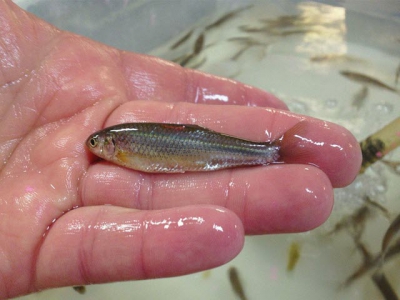How to Farm North African Catfish - Part 4

Suppliers of Pathology Expertise
Assistance can be obtained from the following sources:
- Government extension agents based in fish farming areas.
- Government laboratories, research stations and universities, e.g. in Cameroon the IRAD fish culture research stations in Foumban (West region) and Lanavet (Garoua, North region), may provide expertise and drugs for the above cited diseases.
Statistics
Production Statistics
Global Aquaculture Production of Clarias Gariepinus
(FAO Fishery Statistic)
Nigeria is by far the largest producer of farmed North African catfish in official statistics but the Netherlands, Hungary, Kenya, the Syrian Arab Republic, Brazil, Cameroon, Mali and South Africa also produce significant quantities.
Market and Trade
Domestic and foreign market demand for African catfish in European producing countries (Netherlands, Belgium, Hungary) fluctuates widely.
In Nigeria, the current selling price averages USD 3.5/kg. In the central Africa region, namely in Cameroon, Gabon or Democratic Republic of Congo, this fish is very popular, being cooked in many forms of soups, made of some forest seeds with specific tastes and medicinal properties. The fresh fish are usually sold live in the markets of major cities at an average size of 500 g for USD 3.3-5.2/kg.
In South Eastern Africa, catfish prices are a little lower than those for tilapia. In the South African market, the African catfish is not a good seller. There exists some religious aversion by some consumers (who do not eat fish without scales); others reject the fish due to its slightly darker flesh compared to other catfish such as Pangasius.
Other varieties of catfish seem to be doing well in other places in the world. However, it is difficult to obtain prices for African catfish either because this species is not yet traded internationally, or because it has been included in ‘other freshwater fish’ in statistical returns. Some South African growers have recently closed operations down due to production costs exceeding the selling price; basically this is caused by the high price of feeds.
Status and Trends
African catfish appear as the major fish species cultured in sub-Saharan Africa, followed by tilapias. This is obviously related to continual improvement in mass propagation techniques and the development of water recirculation systems, along with quality feed development. Partnership Research (a recently promoted approach linking private farmers and scientists within a partnership to ensure that findings have direct and tangible impacts on production) is being established in order to reduce production costs, with a major focus on floating feed production using locally available by-products and machinery. Another research focus targeting is the genetic improvement of broodstock. The polyculture system appears to be declining in favour of the more intensified tank culture in its various forms (concrete, fibreglass, plastic containers and pond liners, and recirculation aquaculture systems). However, it may be an error to continue focusing on these intensive systems, which generally depend on imported inputs. While developing more efficient diets to decrease the level of nutrients in pond effluents, it is therefore important to continue optimising the co-culture of African catfish with other complementary fish species.
The market for African catfish in sub-Saharan Africa is developing. Demand for fish is continuously increasing, and most major producing countries are substantial importers of fish to meet their population needs. Above 70 percent of cultured African catfish is currently sold fresh. The market will certainly expand through the development of new product forms and value-added processing.
Main Issues
African catfish are produced almost exclusively on private land and in systems that respect environmental regulations. In traditional flooded ponds, native farmers have adopted sustainable practices for decades, and their self organisation within local communities is being facilitated by traditional rulers and non-governmental organisations to protect the fishery resource. In case where ponds or intensive culture facility effluents enter public waters there is an issue of eutrophication that is being addressed, in part, through the development of extruded balanced feeds.
With the recent collapse of the African catfish market in South Africa, it will become more and more important to reduce production costs in order to remain competitive in a fast evolving business. This may occur through a improvements in pond ecosystems rather than continuing with more and more intensive recirculation aquaculture systems and improved feed technology.
Responsible Aquaculture Practices
In general, African catfish culture is conducted responsibly. The industry is controlled by local regulations, and most governments responsible for the sector are asked to comment on requests for state aquaculture permits in situations where navigable waters are involved and where effluents enter public waters. The creation of catfish farmers associations in most producing countries has been encouraged and facilitated. These associations adhere to the tenets of the FAO Code of Conduct for Responsible Fisheries and the FAO Technical Guidelines for Responsible Fisheries (Aquaculture Development). In Asian countries, however, the situation seems rather different, with uncontrolled transfer of the species by small-scale farmers from Bangladesh to Nepal and India having been reported.
Related news
 How to Farm North African Catfish - Part 1
How to Farm North African Catfish - Part 1 This guide from the FAO Cultured Aquatic Species Information Programme provides information on farming North African catfish.
 How to Farm North African Catfish - Part 2
How to Farm North African Catfish - Part 2 North African catfish are reared in ponds and in concrete, fibreglass and plastic tanks, with various levels of intensification.
 How to Farm North African Catfish - Part 3
How to Farm North African Catfish - Part 3 African catfish can be produced most economically in tropical and subtropical countries, which have favourable temperatures for growth as stated earlier